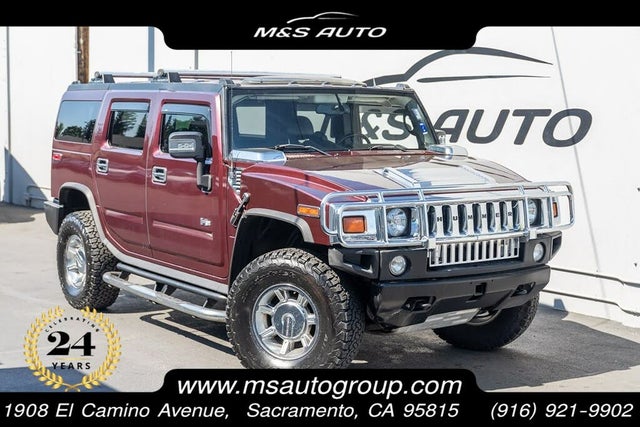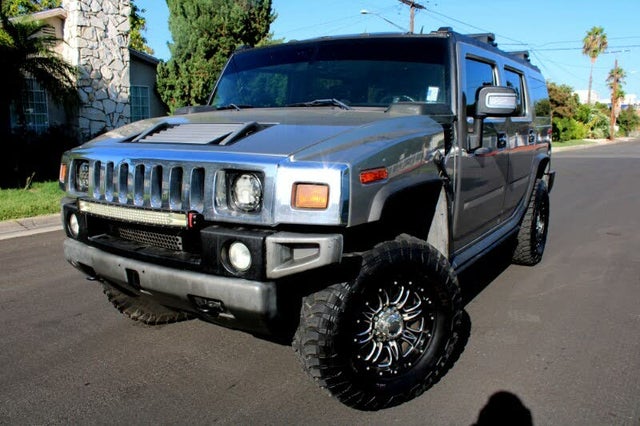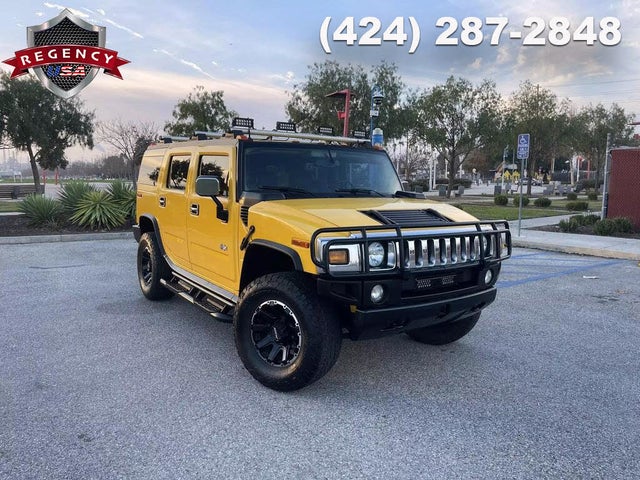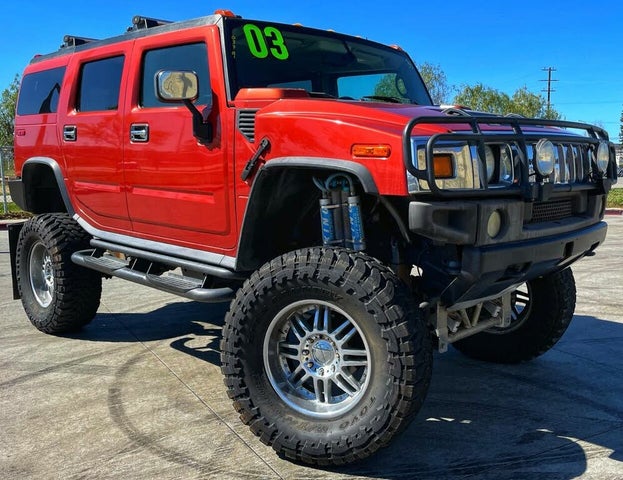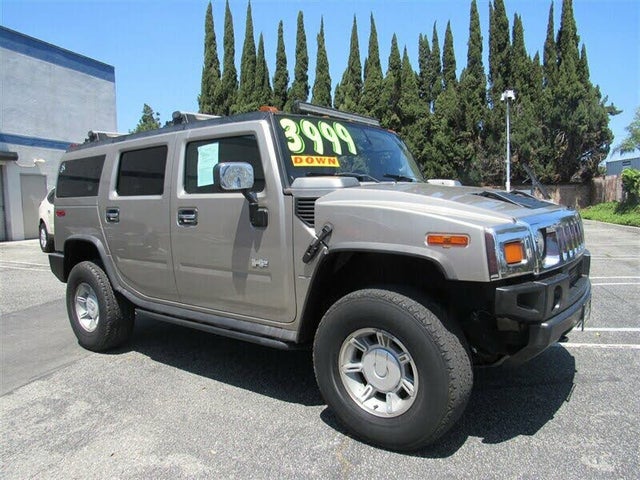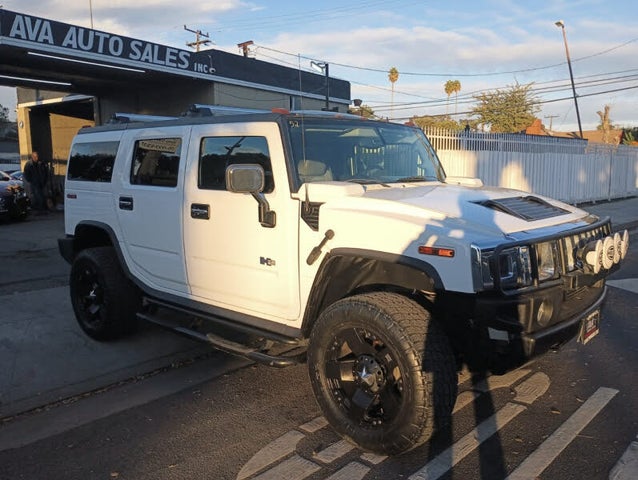Hummer H2 For Sale In California

The sight of a Hummer H2 lumbering down a California highway is becoming increasingly rare, a stark reminder of the state's evolving environmental consciousness. These gas-guzzling behemoths, once symbols of rugged individualism, now stand in stark contrast to California's ambitious climate goals. A surge in listings for used Hummer H2s across online marketplaces in California raises questions about their future in a state that is actively pushing for electrification and reduced emissions.
This trend of Hummer H2s being offered for sale presents a complex intersection of factors. These include fluctuating gas prices, evolving consumer preferences driven by environmental concerns, and the impending tightening of emission regulations within the state. Understanding this situation requires a deeper look into the motivations of both buyers and sellers, as well as the broader implications for California's automotive landscape.
The Allure and the Drawbacks
The Hummer H2, produced from 2002 to 2009, has always been a polarizing vehicle. Its imposing size and powerful engine appealed to those seeking a statement vehicle and off-road capabilities. However, its notoriously low fuel efficiency and significant carbon footprint have drawn criticism, particularly in environmentally conscious regions like California.
For some, the H2's unique aesthetic and perceived durability still hold appeal. The vehicle's robust build and spacious interior continue to attract a niche market, particularly those who value its off-road prowess. However, the practical considerations of owning such a vehicle in California are becoming increasingly challenging.
The Seller's Perspective
Several factors may be driving owners to sell their Hummer H2s in California. Rising gas prices, which have often been higher in California than the national average, make operating a vehicle with notoriously poor fuel economy increasingly expensive. This is coupled with the growing awareness of the environmental impact of driving a gas-guzzling vehicle.
California's stringent emission standards and increasingly stringent vehicle registration requirements may also be contributing to the trend. Older vehicles, like the H2, may face challenges in meeting these standards, potentially requiring costly modifications or repairs. Consequently, some owners may choose to sell rather than invest in keeping their Hummers compliant.
The shift in consumer preferences towards electric vehicles (EVs) and hybrid models in California is undeniable. The state offers incentives and rebates for purchasing EVs, further encouraging drivers to transition away from traditional gasoline-powered vehicles. This increasing popularity of EVs creates a competitive market, potentially devaluing older, less fuel-efficient vehicles like the Hummer H2.
The Buyer's Considerations
Despite the drawbacks, the Hummer H2 still retains a degree of appeal for certain buyers. The allure of owning a large, powerful vehicle with a distinctive design remains a draw for some. The vehicle's off-road capabilities can be attractive to those who frequently venture into areas where a standard passenger car would struggle.
The lower purchase price of a used Hummer H2, compared to newer SUVs or trucks, may also be a factor for budget-conscious buyers. However, potential buyers must carefully consider the long-term costs associated with owning a vehicle with high fuel consumption and potentially higher maintenance costs.
Furthermore, some buyers may be looking to acquire a Hummer H2 for modification or restoration purposes. The vehicle's robust platform and readily available aftermarket parts make it a popular choice for enthusiasts seeking to customize and enhance their vehicle's performance and appearance.
Environmental Regulations and Future Implications
California's commitment to reducing greenhouse gas emissions is unwavering. The state has set ambitious goals for phasing out gasoline-powered vehicles and transitioning to a zero-emission transportation sector. This commitment is reflected in a variety of policies and regulations, including stricter emission standards for vehicles and incentives for EV adoption.
The future of vehicles like the Hummer H2 in California appears uncertain given these trends. As emission regulations become more stringent and the state invests further in EV infrastructure, the practicality and desirability of owning a gas-guzzling vehicle will likely continue to diminish. The rising number of H2s for sale may be a bellwether of this shift.
The long-term impact on the resale value of these vehicles remains to be seen. As demand decreases and operating costs rise, the value of older Hummer H2s may depreciate further. However, the vehicle's unique design and potential for restoration could maintain a certain level of appeal for a niche market of collectors and enthusiasts.
The Broader Automotive Landscape
The situation surrounding the Hummer H2 in California reflects a broader trend in the automotive industry. Automakers are increasingly focusing on developing and manufacturing electric and hybrid vehicles to meet the growing demand for fuel-efficient and environmentally friendly transportation options. This shift is driven by consumer preferences, government regulations, and the increasing availability of EV charging infrastructure.
The transition to electric vehicles is reshaping the automotive market. It is also presenting challenges for owners of older, less fuel-efficient vehicles. As gasoline-powered cars become less desirable, their resale value may decline, and owners may face challenges finding buyers. This is especially true in states like California that are actively promoting EV adoption.
Ultimately, the fate of the Hummer H2 in California is tied to the state's commitment to a sustainable transportation future. While the vehicle may retain a degree of appeal for a niche market, its long-term viability in a state that is actively pursuing electrification remains questionable. The current increase in listings may represent a final opportunity for owners to capitalize on a vehicle that is increasingly out of step with California's environmental goals.


